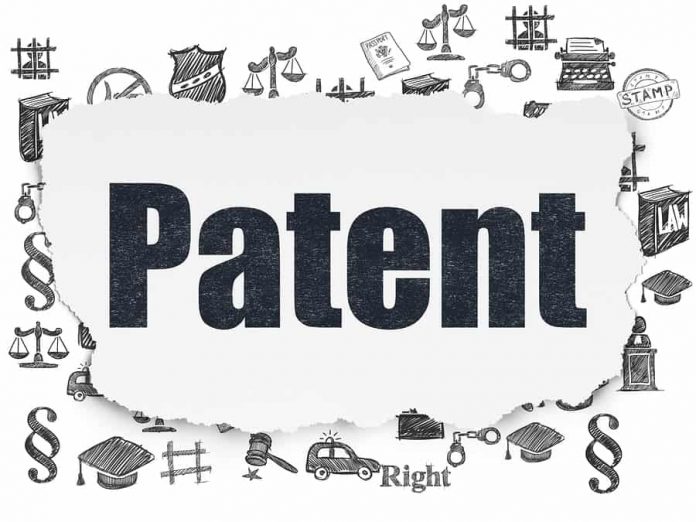This article is written by Ronika Tater, from the University of Petroleum and Energy Studies, School of Law. In this article, she discusses relevant and specific requirements of patent claims, thereby emphasizing the Markush claim and its role and statutory relevance in India.
Table of Contents
Introduction
In the field of science or mathematics, people usually use the name of the discoverer as the name of the theorem or theory, such as Newton’s law, Archimedes Principle, etc. In the field of athletic gymnastics who completed the most difficult action, the action is afterwards known by his name such as Thomas flair. The scope of an invention in a patent is interpreted by its claims in particular to chemical, pharmaceutical and biotech inventions drafted in Markush formula, named after the person who claimed it.
What is a Patent
The patent is a legal right for invention, by applying. It is not an automatic right that comes into existence, unlike copyrights which exist automatically and registered design which only requires registration and also trademark by registration for distinctive identification of products or services. In India, it is governed by the Indian Patent Act, 1970.
Patent filing procedure in India
The process of filing is fully automated and more than ninety percentage filing is done online in the form as below mentioned:
- Communication by Email/SMS.
- Audio/Video conference facility.
- Online public search- Indian Patent Advanced Search system (InPASS).
- AI, Blockchain, IoT, and other latest technologies proposed in the patent processing system.
The application can be filed under Section 6 of the Indian Patent Act by a natural person and other than natural persons; Partnership Firm, Company, LLP, etc. However, it is quintessential that only a natural person can be an inventor i.e., name of the individual and not its company name.
Patent claims
The two important parts of the patent specification are patents are granted and validity of the same is based on claims and lawsuits on infringement of patents are based on the strength of the claims. Hence, a patent claim is one of the essential steps in the patent filing procedure, and the following should be considered:
- The boundary of protection or the crux of the invention
- Neither too broad nor too narrow
- Clearly define the invention with no ambiguity
- Relate to a single invention
- In one single sentence
- Independent and dependent claims
- Product and process applicant
Patent Drafting
While drafting a patent, the below-mention should be considered to avoid any ambiguity in the process:
- Avoid putting out novel features in the description.
- Avoid using long sentences and maintain a brief description.
- Text in drawing not allowed.
- Don’t limit claims with unnecessary features.
- Too broad claims are ambiguous in scope.
The validity of the patent is for 20 years from the date of filing. Except for the first two years, renewal fees are payable until the completion of the 20 years.
Relevance and specific requirements of patent claims
As claims play a major role in a patent application, it should comply with the definiteness requirement and careful analysis of the inventor’s contribution to the creation as well as a foresighted prediction of how others might use the invention and what it facilitates, not yet known, might exist. A claim is a written statement, as being the most important part of a patent document.
The part where the inventor specifically states what their invention is and what it can do. In a complete specification, it is then followed by the Statement of claims. Since the claims make up the legal part of defining the scope of a patent and claiming the protection of the patent rights, the construction of the same plays a vital role as it is central to the evaluation of infringement and validity. The objective of the claims is to define the invention with conciseness, precision and with accuracy so that others know the limitation of the area of protection in which they should not infringe.
Various types of claims
The various types of claim are mentioned below:
Process claim
When an inventor cannot adequately describe the invention, it may refer to other ways of making a product. To define the invention or the product through the process of making it is known as a process claim. Example: A jewel consisting of the diamond is prepared by a process of detonating a charge inclusive of a carbon-containing explosive having a negative oxygen balance to form a detonation product, and then cooling the denotation product at a rate of about 200-6000 degrees/minute. The scope of the process claim is that the product may not always be limited by the described process.
Means-Plus-Function Claims
It is an element in a claim for a combination to express as a means or step for performing a specific process without the enumeration of structure, material, or acts in support. It is required by the applicant to express in the patent specification the various performances and functions that the inventor expects. Example: A means for mixing the combined materials. The word means is focused here, a round shape apparatus for cooking rice, comprising: a means for holding rice; and a heater arranged to heat the rice holding means.
Jepson Claim
It defines the claim in two parts: A preamble first and then followed by an “improvement” clause which enumerates the applicant about his invention. It is also referred to as a two-part claim in some parts of the world. However, a characterizing portion is preceded by the expression. Example 1: A game device, with a handle and a head portion connected to the handle, characterized by a protrusion to secure the handle.Example 2: A method of picking grains which comprise of spotting the stone and lifting the stone; wherein the improvement comprises: spotting the stone; stretching the hind arm to touch the stone; lifting the stone with the digits of the hind arms.
What is Markush Claim
The Markush claim is a type of claim specifically used for claims in Chemical and Biotech inventions, which was used by the inventor Eugene Markush in a US patent in 1920. Eugene Markush filed a patent application with the US Patent comprising his original, organic chemical compounds. To avoid multiple applications, he coincided with a new language “material selected from the group consisting of”. However, since then this claim has been used to cover a family of a large number of compounds with permutation and combination. This claim refers to a chemical structure through symbols showing substituted groups. It can also be understood as a family of compounds by defining a structure common to all members of the family along with substituents selected from the set consisting of named chemical compounds.
“The process for the manufacture of dyes inclusive with a halogen-substituted pyrazolone, a di-azotized unsulphonated material selected from the group comprising of aniline, homologues of anilin and halogen substitution products of aniline”.
This type of claim permits important innovations to be patented. For example: when a newly developed organic compound that has a novel structure is invented and it can have many substituents that could be used in many possible ways, one can group these substituents in a Markush type of claim for its invention.
Thus, it can claim the basic structure along with substituents as halogens, alcohols, hydrocarbons, etc. although, these groups of compounds are permitted when supported by a single and definitive process. But with chemical compounds, it is possible to use many substituents in a structure. It is vital to note that the results of a few hundreds of formulations and each substitution location could be a different alternative. However, changes in the substituent group do not change the initial use of the compound and can be considered as a part of the original invention.
Markush grouping
A Markush grouping is defined as a listing of specified alternatives of a group in a patent claim, generally expressed in the form: a member selected from the group comprising of A, B, and C. Example: A compound of the formula OH-CH-R, in this case, R is selected from the group comprising of chlorine, bromine and iodine. Generally used in the chemical invention for the article claim. Transition phrase consisting of always close-ended.
The statutory requirement of Markush claim in India
In India, while examining a patent application with Markush claims, it is important to look at the language and it should comply with the provision under the Indian Patent Act, as disclosure of the invention, specification, enablement and the process of performing the invention and definitive claims should be precise, concise and in a clear manner.
Section 10(4)(a) and (b) of the Indian Patent Act states that the complete specification should describe the invention and its operation, use, process, the method by which it is performed, and the applicant should disclose it for such claim protection to protect it from infringement by any other. Moreover, Section 10(4)(c) provides that every specification of the invention should conclude with a claim or a set of claims defining the objective of the invention to provide a better understanding.
To claim the product under the Markush form, at least one process for preparing the compounds shall be disclosed as the requirement in the complete specification to prove the claimed invention. Furthermore, Section 10(5) states that the claims should be clear, succinct and unbiased based on the description of the invention process. However, in the absence of compiling any such requirement, the claims are objected to with a lack of unity of invention and insufficiency of disclosure.
Recommendations
The following are the recommendations for referring to the invention under the Markush claim:
- To highlight a complete description of the claimed invention with the appropriate example indicating the working of the invention while drafting the patent application.
- At least one of the processes should represent the entire class of compounds to avoid any grounds leading to the sufficiency of disclosure or clarity requirement.
- To include all the information about the compound while disclosing through a Markush form referring to the same chemical class as similar to the particular compound for the patent application.
- Markush’s claim should be within the scope of the invention as mentioned in the Act.
- A complete and descriptive drafting style would facilitate the inventor to seek the protection of the complete group of compounds.
- Moreover, while claiming a pharmaceutical or biotech active compound, it is considered that all the claimed compounds for the invention should be in pari materia to therapeutic potential.
Conclusion
The process for applying for a patent requires to be specified in a particular claim to avoid any infringement. In this case, the Markush structure not only represents many compounds with possible substituents of related structures but also provides the applicants to claim one single claim, thus avoiding the complexity of drafting multiple applications for each compound. It also saves the additional fee enabling multiple claims while applying. However, it is known that the Markush claim should be drafted in a special manner although it provides wide protection in form but is given strict restrictions on its interpretations, and requirements on unity. As for inventors, they should pay attention to the drafting of such application by following the below-mentioned points to avoid any unnecessary delay in the process:
- To understand the initial intention of drafting in such a manner and provide a reasonable arrangement for Markush elements and ensure that the alternative compounds can achieve the same or similar technical effects.
- To facilitate the examination, research and assessment of the claims it should record the matter, activities, structure, technical features and effect of the Markush compounds in the specification.
- To keep in mind the rules on the examination and reasonably select and control the protection scope of the invention to avoid unnecessary amendments in later procedures.
- While examination and analyzing the scope of the invention under the Markush claims may be difficult, so it is important for generic drug facilitators during examining the infringement issues and performing freedom to operate searches.
References
LawSikho has created a telegram group for exchanging legal knowledge, referrals and various opportunities. You can click on this link and join:
 Serato DJ Crack 2025Serato DJ PRO Crack
Serato DJ Crack 2025Serato DJ PRO Crack











 Allow notifications
Allow notifications



